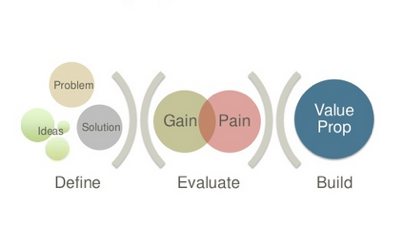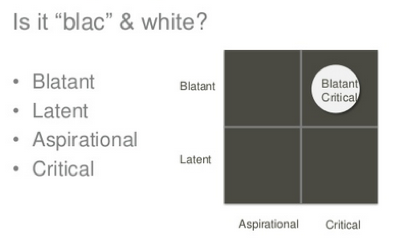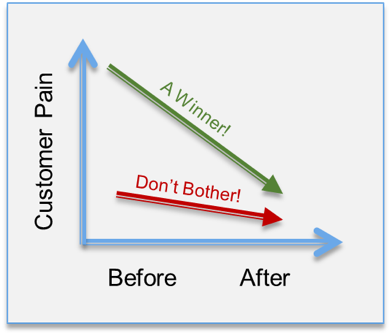 Concept Viability Assessment – this assessment is more heuristic and perhaps not as tidy as the other tools mentioned. This set of tools is borrowed from articles I have read by Michal SkoK of the Harvard Innovation Lab. (I hope as you read this his videos and articles are still posted.) This assessment, examines the idea / product / solution itself, and was initially designed for entrepreneurial investments and start-up ventures. This assessment examines your concept according to multiple dimensions to validate that the idea is – in short – worth doing!
Concept Viability Assessment – this assessment is more heuristic and perhaps not as tidy as the other tools mentioned. This set of tools is borrowed from articles I have read by Michal SkoK of the Harvard Innovation Lab. (I hope as you read this his videos and articles are still posted.) This assessment, examines the idea / product / solution itself, and was initially designed for entrepreneurial investments and start-up ventures. This assessment examines your concept according to multiple dimensions to validate that the idea is – in short – worth doing!
First things first: pick a big fight! The pursuit of small markets and small returns are not rewarded. While this is a relative notion, it is worth careful reflection, and the most important factor is to brutally honest about the real market size potential and your achievable share. Next, Skok points out that most problems worth solving meet the “4U criteria”, they are Unworkable, Unavoidable, Urgent, and Underserved. His point is that there is real pain felt by real customers doing things the “old way”, and so, there will be real gain for the customer now doing things “your way”.
 Next, Skok asks is the market for this solution “BLAC and White”. With this heuristic he assesses the urgency of the problem from the customer’s perspective (is the problem Blatant and Critical (obvious and urgent), versus Latent and Aspirational (only nice to have)). And in asking “is it white” he is asking is this a whitespace in the market that is an open area of opportunity, which you can capture and defend with a unique offering.
Next, Skok asks is the market for this solution “BLAC and White”. With this heuristic he assesses the urgency of the problem from the customer’s perspective (is the problem Blatant and Critical (obvious and urgent), versus Latent and Aspirational (only nice to have)). And in asking “is it white” he is asking is this a whitespace in the market that is an open area of opportunity, which you can capture and defend with a unique offering.
The next hurdle in Skok’s toolset assesses the potential of the solution itself, noting that faster, better, cheaper is INCREMENTAL – what you want is a compelling breakthrough! To assess this, you want to satisfy Skok’s “3Ds” :
- Is this a Discontinuous innovation – your plan is truly differentiated and unique
- Is it Defensible Technology – your execution plan cannot be readily copied either by using special knowledge, innovative systems, patents or other significant protection.
- Is it a Disruptive Business Model – something about your business plan creates new opportunity that others are not equipped to address
 And finally, you need to assess your solution to the customer problem you are solving. First, there needs to be real pain consequence and urgency for the customer “before”. In this assessment, you want to be as quantitative as possible to get a real assessment for the value that you are bringing to the customer with your solution. Of course, what you want is for the “after” scenario to be absolute joy for the customer. You have transformed some critical piece of their world in a way that they are sure to pay for! You don’t just want vitamins – you want penicillin!
And finally, you need to assess your solution to the customer problem you are solving. First, there needs to be real pain consequence and urgency for the customer “before”. In this assessment, you want to be as quantitative as possible to get a real assessment for the value that you are bringing to the customer with your solution. Of course, what you want is for the “after” scenario to be absolute joy for the customer. You have transformed some critical piece of their world in a way that they are sure to pay for! You don’t just want vitamins – you want penicillin!
The “before / after” test is a simple assessment, but also a powerful one. To really make this work, you need to take your solution to potential customers and assess their view of the “before and after” scenarios. And, the Pain / Gain ratio for your customers has to be significant enough to overcome the inertia of doing nothing and to overcome the pain and hassle – not to mention the cost – of buying and deploying your solution.
Finally, in defining the value proposition, Skok recommend the same framework that is used in Geoffrey Moore’s crossing the chasm. This is of the form:
- [The product or solution] is for companies with [the market segment]
- Who are dissatisfied with [the problem statement]
- Our [name of product]
- Enables them to [core message regarding your solution]
- Unlike [alternative solution] our [the product] [state primary differentiation]
However, it is very important that you can reinforce the value proposition with qualitative and quantitative evidence to back up and even amplify the claims of the value proposition. But if survive the litmus tests of this framework, you should be able to do this without a problem! In that case you truly are are providing a discontinuous, disruptive and defensible solution to an unavoidable, unworkable, urgent and underserved market problem!
Again, this kit of Concept Assessment Tools from Michal Skok are not as neat and tidy as the other tools, but these set of tests for possible new ventures or products are very thought provoking, challenging, and set a high bar for businesses or entrepreneurs. This set of tools stress tests your business concept, new product idea, or strategy and provokes a new level of critical thinking and creativity, and may also stop you from launching on a bad idea. Skok’s key contention is that you need to focus your investments on real breakthroughs. This is a good challenge for us all.
